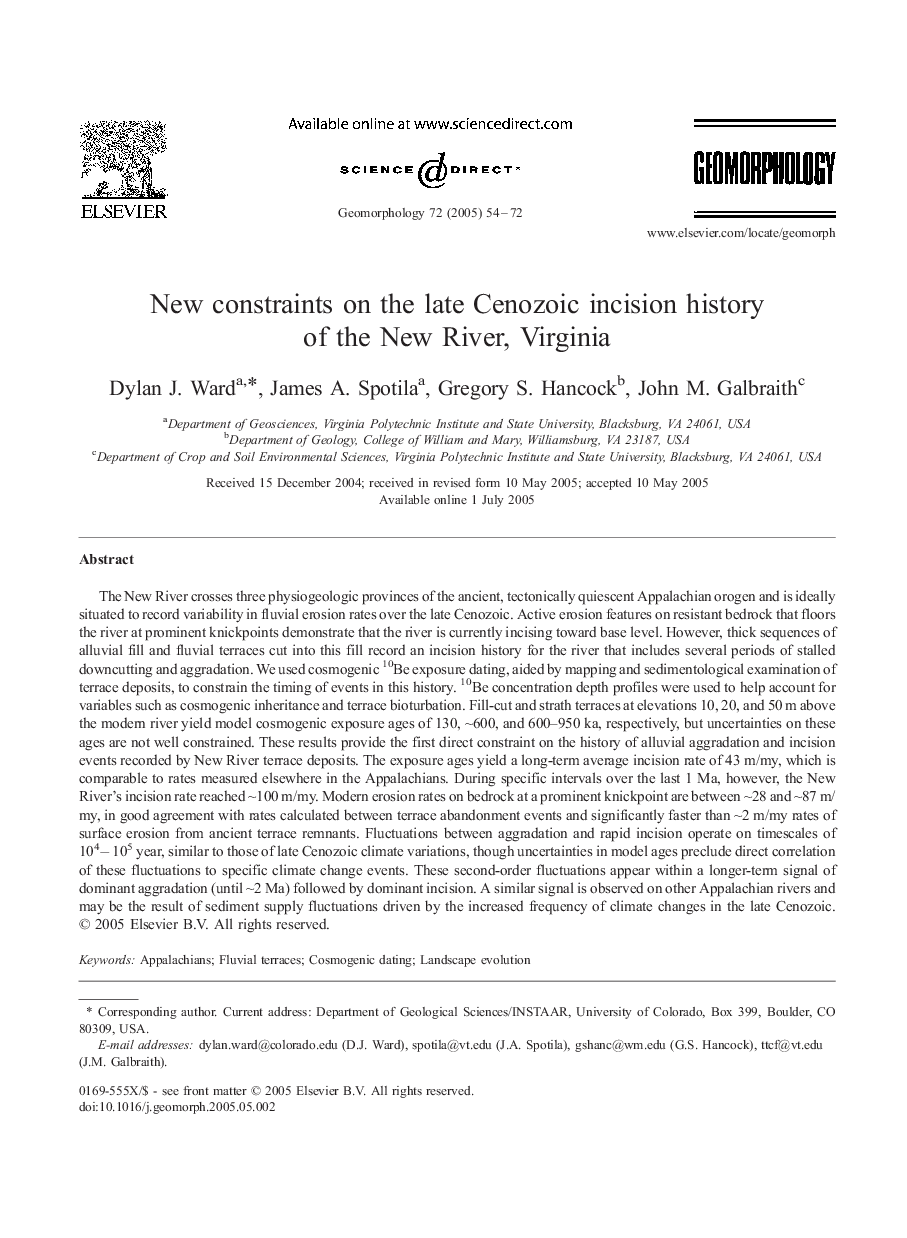| کد مقاله | کد نشریه | سال انتشار | مقاله انگلیسی | نسخه تمام متن |
|---|---|---|---|---|
| 9524782 | 1635606 | 2005 | 19 صفحه PDF | دانلود رایگان |
عنوان انگلیسی مقاله ISI
New constraints on the late Cenozoic incision history of the New River, Virginia
دانلود مقاله + سفارش ترجمه
دانلود مقاله ISI انگلیسی
رایگان برای ایرانیان
کلمات کلیدی
موضوعات مرتبط
مهندسی و علوم پایه
علوم زمین و سیارات
فرآیندهای سطح زمین
پیش نمایش صفحه اول مقاله

چکیده انگلیسی
The New River crosses three physiogeologic provinces of the ancient, tectonically quiescent Appalachian orogen and is ideally situated to record variability in fluvial erosion rates over the late Cenozoic. Active erosion features on resistant bedrock that floors the river at prominent knickpoints demonstrate that the river is currently incising toward base level. However, thick sequences of alluvial fill and fluvial terraces cut into this fill record an incision history for the river that includes several periods of stalled downcutting and aggradation. We used cosmogenic 10Be exposure dating, aided by mapping and sedimentological examination of terrace deposits, to constrain the timing of events in this history. 10Be concentration depth profiles were used to help account for variables such as cosmogenic inheritance and terrace bioturbation. Fill-cut and strath terraces at elevations 10, 20, and 50 m above the modern river yield model cosmogenic exposure ages of 130, â¼600, and 600-950 ka, respectively, but uncertainties on these ages are not well constrained. These results provide the first direct constraint on the history of alluvial aggradation and incision events recorded by New River terrace deposits. The exposure ages yield a long-term average incision rate of 43 m/my, which is comparable to rates measured elsewhere in the Appalachians. During specific intervals over the last 1 Ma, however, the New River's incision rate reached â¼100 m/my. Modern erosion rates on bedrock at a prominent knickpoint are between â¼28 and â¼87 m/my, in good agreement with rates calculated between terrace abandonment events and significantly faster than â¼2 m/my rates of surface erosion from ancient terrace remnants. Fluctuations between aggradation and rapid incision operate on timescales of 104â 105 year, similar to those of late Cenozoic climate variations, though uncertainties in model ages preclude direct correlation of these fluctuations to specific climate change events. These second-order fluctuations appear within a longer-term signal of dominant aggradation (until â¼2 Ma) followed by dominant incision. A similar signal is observed on other Appalachian rivers and may be the result of sediment supply fluctuations driven by the increased frequency of climate changes in the late Cenozoic.
ناشر
Database: Elsevier - ScienceDirect (ساینس دایرکت)
Journal: Geomorphology - Volume 72, Issues 1â4, December 2005, Pages 54-72
Journal: Geomorphology - Volume 72, Issues 1â4, December 2005, Pages 54-72
نویسندگان
Dylan J. Ward, James A. Spotila, Gregory S. Hancock, John M. Galbraith,